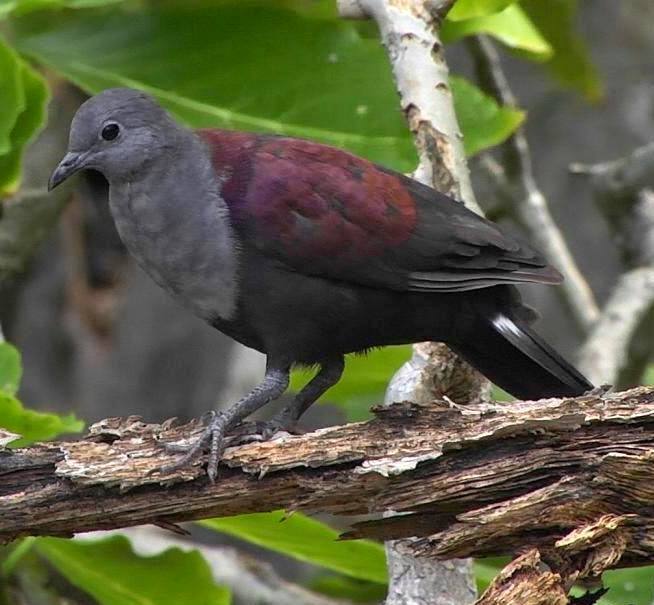 |
| Photo by Josep del Hoyo (Internet Bird Collection) |
Common name:
Marquesan ground-dove (en); pombo-perdiz-das-Marquesas (pt); gallicolombe des Marquises (fr); paloma-perdiz de las Marquesas (es); Marquesen-erdtaube (de)
Taxonomy:
Order Columbiformes
Family Columbidae
Range:
This species is endemic to the Marquesas islands, in French Polynesia, only occurring on the uninhabited, cat-free islets of Hatuta’a and Fatu Huku.
Size:
These birds are 20 cm long.
Habitat:
The Marquesan ground-dove is found in dry tropical forests and moist scrublands, namely Pisonia grandis groves, usually preferring the plateau of the islands and rarely descending to vegetation near the sea.
Diet:
They forge on the ground, feeding primarily on seeds such as those of Pisonia.
Breeding:
Marquesan ground-doves nest in a platform made of twigs, wehre the female lays 2 eggs. The incubation period lasts 13-15 days, but there is no information regarding the fledging period.
Conservation:
IUCN status – VU (Vulnerable)
This species has a very small breeding range and the global population is estimated at 1.000 individuals. The population is believed to be stable at present, although some fluctuations may take place due to droughts. This species was possibly wiped out from other islands in the Marquesas archipelago due to predation by introduced cats, and the same could happen to the remaining populations if cats reach their islands. The likely effects of global warming, such as more frequent and severe weather events could pose a threat in the future.







